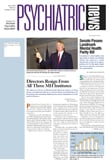With no end in sight to rising tuition rates, thoughts of saving for your child’s college education may send shivers down your spine. According to a recent survey conducted by the College Board, by the year 2020 the cost of a four-year degree is expected to increase 165 percent for both public and private institutions.
But the goal of providing a first-rate education doesn’t have to be a frightening experience. New investment alternatives and tax laws are making it easier for parents and grandparents to plan ahead.
One of the latest developments in education planning, the 529 plan offers several advantages that other saving plans do not. The benefits may vary from state to state, but the following may be used as general guidelines:
• Unlimited eligibility requirements: Anyone, regardless of age, may be named as beneficiary to the account. If the original beneficiary does not attend college, a new beneficiary, one who must be related to the first, can be named.
• Flexible contribution limits: Anyone can contribute on behalf of a specific beneficiary, including parents, grandparents, other relatives, and family friends. Depending on which plan is chosen, total combined contributions for each beneficiary can be as little as $25 a month or as much as a total of $246,000. Individuals can generally contribute up to $50,000 of that amount in a single year without estate- or gift-tax consequences, provided other financial gifts are not given in a five-year period. For married couples, contributions can be up to $100,000.
The results are astounding. Imagine that a mother and father along with four grandparents decide to set up an education fund in an amount equal to the maximum $246,000. If this were to grow at 10 percent a year over 18 years, the amount in the 529 plans would total $1,367,740.
• Tax-deferred earnings: All growth within the account is tax-deferred until withdrawn.
• Tax-free qualified withdrawals: All growth is tax free if the proceeds are used to pay for qualified expenses at any accredited private or public college, university, or technical or vocational school in the country and some foreign schools. Eligible institutions are listed on the Web at www.ed.gov/offices/OSFAP/Students/apply/search.html. Qualified expenses include tuition, fees, books, supplies, and equipment required for the enrollment or attendance of the beneficiary at an eligible educational institution. Room and board is also included if the student is at least half time. Beginning in 2002, room and board limits will be set by the educational institution.
• No income limits: Investors can contribute to the plan regardless of their income.
• Controlled disbursements: Benefits do not automatically transfer to the beneficiary when he or she reaches a specified age. The owner of the account controls all withdrawals, ensuring the funds are used for educational purposes, unlike Uniform Gift to Minors Act accounts, which become the property of the child at his or her age of majority.
• Unlimited choice of colleges: Assets can be used at any accredited institution of higher learning in the United States and in some foreign institutions, regardless of where the beneficiary lives. Accredited institutions may include colleges, graduate schools, vocational schools, and other types identified by the plan.
• Choice of beneficiary: If the beneficiary does not need the funds, or if some funds remain after paying for college, the account may be transferred to certain specified relatives of the original beneficiary.
When looking for a 529 plan, you will find that they are established as “ready-made” mutual fund portfolios. Some plans are offered by mutual fund families and provide several of their own money managers, while other plans allow for the inclusion of many different mutual fund company managers.
A free question-and-answer outline of the most recent 529 rules or additional information may be obtained by calling (800) 722-1258.
APA members who would like more information about the APA Member Retirement program may contact John Grande by phone at (800) 262-9110 or by e-mail at [email protected]. ▪
